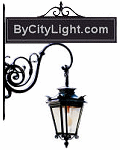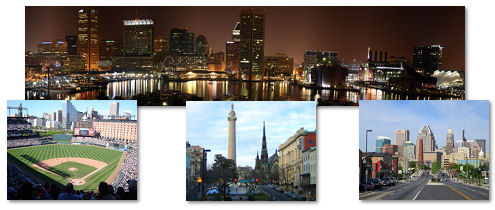
City Maps/Weather
| Fun City Facts The world's largest man-made waterfall is 438 feet tall. It is the spillway over the Shasta Dam in Redding, California. The largest city in area in the United States is Juneau, Alaska. It covers 3,248 square miles, yet the city population is fewer than 30,000. |
|
|
||||||||
Baltimore, Maryland
City History |
||||||||
 The city of Baltimore dates from July 30, 1729, and is named after Lord Baltimore, who was the first Proprietary Governor of the Province of Maryland. Baltimore grew swiftly in the mid to late 18th century as a granary for sugar producing colonies in the Caribbean. Baltimore played a key part in events leading to and including the American Revolution. Baltimore joined other cities in protesting Boston's punishment by the British by banding together the merchants to sign agreements to not import from or export to Britain. During the War of 1812, the British declared Baltimore a "nest of Pirates." The city's Fort McHenry came under attack by British forces near the harbor after the British had burned Washington, D.C. Known today as the Battle of Baltimore, American forces won by repulsing joint land and naval attacks. When the British landed at Sparrows Point, the local residents took up arms and when they had run out of ammunition, they threw pots, pans and anything they could get hold of at the British. They fought to a stalemate at the Battle of North Point and also killing the British commander General Ross, who had said upon landing, "We will win this battle or I eat dinner in hell tonight" British reinforcements were not possible from then on, and their forces subsequently withdrew. The naval engagement inspired Francis Scott Key to write the poem "The Star-Spangled Banner," the lyrics to the United States' national anthem. Baltimore's population grew explosively, due to increased commerce not only abroad but more importantly with patrons west in the interior of the United States. On an 1827 visit to the city, John Quincy Adams purportedly nicknamed it "Monument City" due to the development of a unique skyline peppered with churches and monuments. Baltimore became an independent city in 1851, being separated from Baltimore County at that time. Maryland remained part of the Union during the Civil War and slavery was outlawed in Maryland by 1864. A Pro-Southern reaction led to the Baltimore riot of 1861, when Union soldiers marched through the city. After the riot, Union troops occupied Baltimore, and Maryland came under direct federal administration to prevent the state from seceding until the end of the war in April 1865. This was considered a necessary move by the Union to prevent Washington, D.C., from being completely surrounded by seceded Confederate territory. Tragically the Great Baltimore Fire of 1904 destroyed over 1,500 buildings in 30 hours and forced most of the city to rebuild. Two years later the Baltimore-American reported that the city had risen from the ashes and "one of the great disasters of modern time had been converted into a blessing." In recent years, efforts to redevelop the downtown area have led to a revitalization of the Inner Harbor. Up until the late 1970s, the harbor had been merely abandoned warehouses. In Baltimore's early days, the harbor was the landing destination for boats and ships bringing cargo from all over the world. Now the city is a major U.S. seaport. Once an industrial town with an economic base in manufacturing, Baltimore's economy has now shifted primarily to a service sector-oriented, with its largest employer being Johns Hopkins University and The Johns Hopkins Hospital. In 1996, Baltimore became the first city in the United States to adopt 311 as a non-emergency "hot line" telephone number, in order to reserve the use of 911 for genuine emergencies. The concept has been highly successful, and many other US areas have since implemented the practice. |
Historic Figures
Lord Baron Baltimor 2nd (1605–1675)| Lord Baron Baltimor 2nd (1605–1675) | |
| The 1st Baron Baltimore, who had long pursued a colony in the mid-Atlantic to serve as a safe haven for English Catholics, received a charter from Charles I of England for the new colony of Maryland. The original charter included the western shore of the Chesapeake Bay as far south as the Potomac River. However the settlers from Virginia had by now crossed the bay to start settling the southern tip of the eastern shore, the grant was revised to include the eastern shore south with a line drawn east of the Potomac River. Becoming in history the founder and name sake of Baltimore, Maryland. | |
browse cities | search | get listed | spotlight | about us | contact us | policies | partners
Copyright ©2024 www.ByCityLight.com - Page Design by Erik Schubach and Tristan Chambers